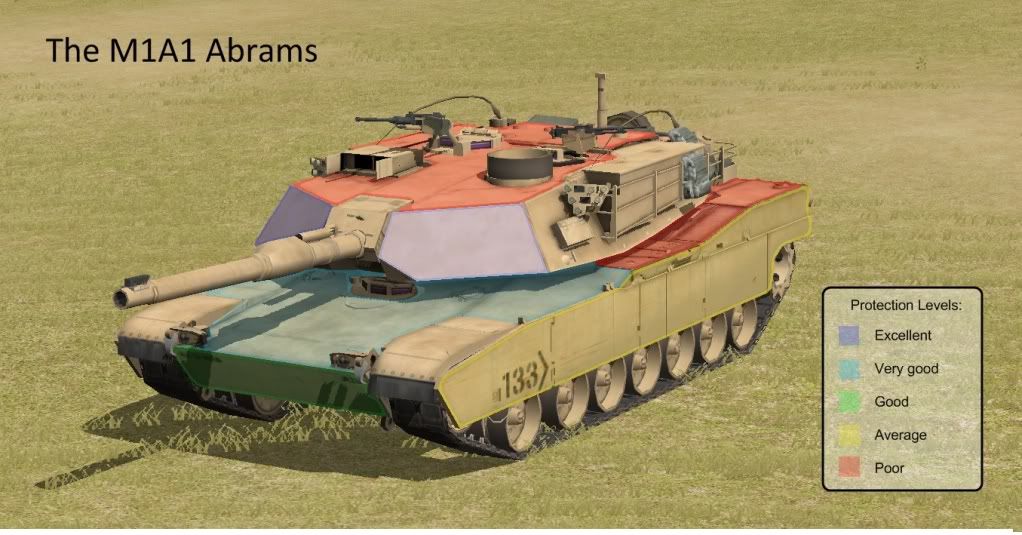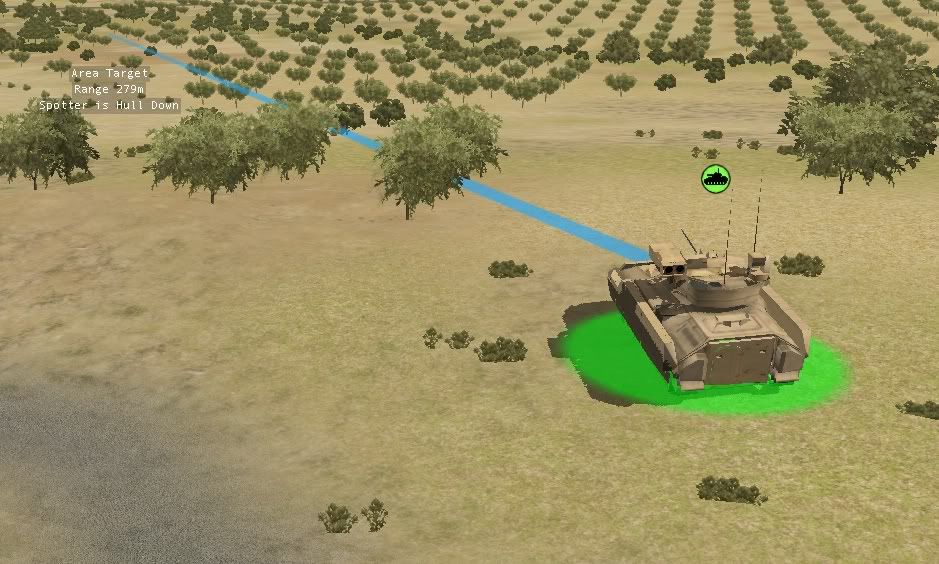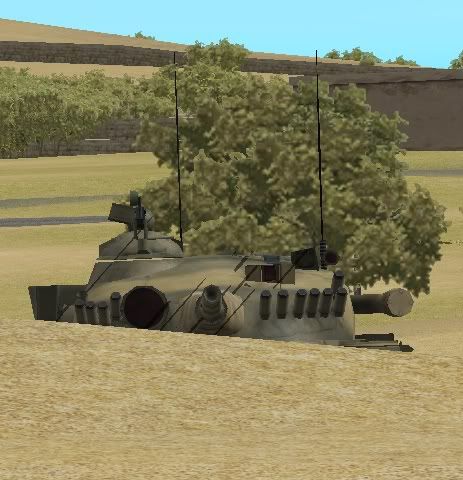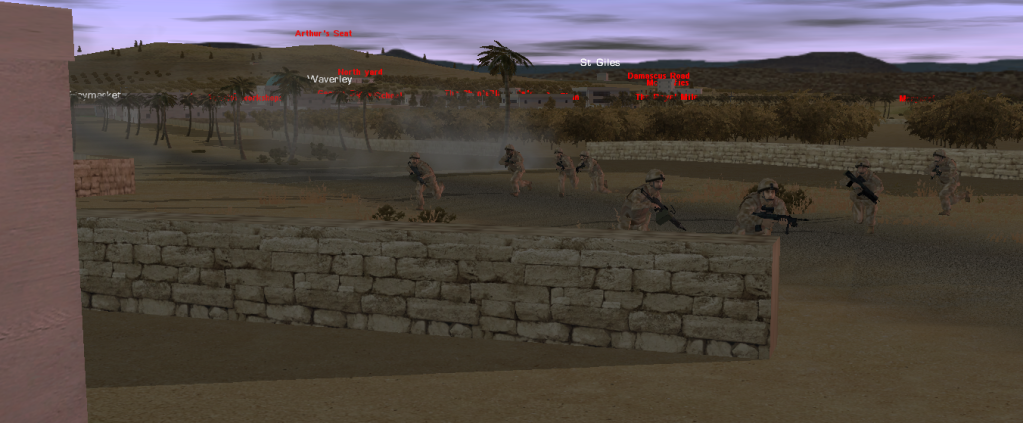
hcrof
-
Posts
1,100 -
Joined
-
Last visited
Posts posted by hcrof
-
-
I agree with Sergei, I like the bloke but can't we wait a few years to see if he actually does anything before handing out the medals?
-
I think there would be a lot of support for a Cold war gone hot game. We all lived through the cold war (or at least the very end of it
 ) and it would make for some amazing battles. During the 1980's both sides still had a lot of legacy equipment so a mid to late '80s game could simulate much of the whole war. M48s vs T-54 anyone? or M1 Abrams vs T-80? I think a lot of people would be shocked at how the west wasn't as strong as it is now!
) and it would make for some amazing battles. During the 1980's both sides still had a lot of legacy equipment so a mid to late '80s game could simulate much of the whole war. M48s vs T-54 anyone? or M1 Abrams vs T-80? I think a lot of people would be shocked at how the west wasn't as strong as it is now! -
Modern russian operating procedures (as is US, I am sure) when caught in roadside ambush is either:
a) Speed up and try to escape (unlikely as enemy will try to block the road)
 Dismount immediately and fight on foot.
Dismount immediately and fight on foot. These were standard procedures in Afghanistan and Chechnya.
Staying inside an APC in an ambush is a suicide. One RPG hit and vehicle becomes a graveyard.
You are right of course but procedures and reality are often very different, especially in conflicts where the troops are not adiquately prepared (1st Chechnya war). I imagine it takes a lot of guts to leave a carrier when bullets are bouncing off the sides and without experienced NCO's pushing you out it might not ever happen.
I have heard of stories where troops sat there and blazed away out of their carrier untill they ran out of ammunition rather than leave and carry the fight to the enemy.
-
Doesn't the 'slow' command do exactly that?
-
The AGS-17 is a frighteningly effective weapon. I just get annoyed that it doesn't come with any transport around the battlefield.
Why do scenario builders never include them? They make life very difficult for the BLUEFOR
-
Supress them with a tank MG, the squad won't be able to respond to that!
-
As far as I know, this is correct for US vehicles. Syrian (Soviet) vehicles however all have firing ports in the side and troops are expectected to use them.
As Steve has said many times, firing small arms out of a moving vehicle is not very effective, however Soviet doctrine calls for a massive weight of fire during the attack, even if it is not effective to suppress the enemy and bolster freindly morale.
Firing ports are also frequently used in vehicle ambushes as green troops are afraid to leave the armour protection of the carrier and instead blaze away from inside. This was noted in both the Afghan and Chechen campaigns and was seriously detrimental to survivorability.
However, since the BMP-3 has firing ports the Russians must still believe that they are effective, even after several wars so I will not say they are useless!
-
I want this as well. In an ambush it would be pretty awsome for the passangers of the vehicle to fire through the firing ports. Mounted assaults happen more often than not as well and this would also require the use of firing ports to do properly.
As well as that, passengers in open topped british vehicles should be able to use small arms.
I am no expert on WW2 but isn't the code going to have to go in anyway for halftracks in Normandy?
-
Uh, Green/Regular IBCT infantry? They straight out of basic or something?
Even National guard would have had intense pre deployment training to make them all regulars wouldn't they?
Given the paranoia the west has about casualties I can't see them sending under prepared troops to a warzone and I thought green troops were 3rd world conscript level - not entirely useless (given good morale) but need supervision.
-
Not only do they have 200 nukes, they also have the means to deliver them to anywhere on the planet. That is a very credible nuclear deterrent.
Im not sure they are allied with Russia either. They share many interests but not to the extent that they are allied.
-
The above post is the last thing I have written for the guide. In addition to the usual analysis of my post and additions to the information already up there, does anyone think more is needed for the guide?
What else needs to be included?
Will anyone contribute more sections?
-
The Main Battle Tank and How to use it
One of the hallmarks of the modern battlefield is the use of the Main Battle Tank. A modern tank is used to quickly move a massive amount of firepower to where it is needed and to have enough protection to shrug off anything the enemy tries to stop it with. In short, they are a battle winner, but they are not invulnerable and one bad decision can turn your war machines into flaming wrecks.
Tank Armour
One of the biggest problems facing tank designers is weight. Although it would be nice to have your tank protected by 6 feet of armour, in reality the engine would give up and no bridge would be strong enough to take you across.
Tank armour is concentrated in the area which are most likely to be hit – the front. Below is a diagram showing approximate armour strengths.

Western tanks like the Abrams are nearly impenetrable in the front turret. In addition, all the sensor
equipment is located here. The reason for this is that it allows the tank to go 'Hull down'. Hull down is a defensive posture where the tank is positioned so that only the turret shows above a ridge. This makes it a much smaller target and exposes only the strongest armour to enemy fire. A good commander will seek to position his tanks hull down at all times when stationary and only leave the position in order to move to a new hull down location.
Bear in mind that hull down is relative. Just because an enemy tank can only see your turret from one direction doesn't mean that another tank isn't creeping into a better position in order to take you out. Also because all the sensor equipment is on the front turret, it can easily be destroyed if hit. A blind tank is a useless tank.


In Shock force the best way to go Hull down is to move the camera to a likely location and go as close to the ground as possible. This will give you an idea as to whether that place is suitable. After plotting a movement order, click on the waypoint and extend a targeting line to the area where enemy fire is likely to come from and the game will tell you whether you are hull down or not. If you are not fully hull down, just move the waypoint slightly and try again. After a few tries, your tank will be in a perfect location!
The weapon system
The main weapon on a tank is its gun. A tank gun can fire 3 types of ammunition, each with a different purpose, strengths and weaknesses.
APFSDS: Armour Piercing Fin Stabilised Discarding Sabot – Primary ammunition used to destroy enemy tanks. It is basically a long and heavy dart that concentrates an incredible amount of energy into a very small area. Penetrating power is lost at very long ranges because the projectile slows down due to air resistance.
HE: High Explosive – Effective against infantry and buildings but tank armour will probably be unaffected.
HEAT: High Explosive Anti Tank – Uses a shaped charge to concentrates an explosion into a very small point. Can pierce armour even if the projectile is moving very slowly and has a secondary role against infantry. Designed to be used at very long range where the sabot round has lost most of its energy.
HESH: High Explosive Squash Head – Uses a low velocity explosive charge that 'splats' against a target before exploding. The resulting shock wave causes the armour to flake away at high speeds, damaging anything inside. Can also be used against infantry and is especially effective against light armoured vehicles and structures.
Just as important as the gun is the optics and targeting system. If a gun can't see and hit the target first, it is useless. Western tanks are considerably better in this capacity, resulting in many Syrian vehicles blowing up without the commanders even knowing they were under attack. Western tanks also have the ability to fire on the move with much greater accuracy due to better gun stabilisation equipment.
A classic example of this is the evolution of the T-72. Although, they are fundamentally the same tank, late model T-72's are orders of magnitude more effective than the early ones – mainly because of improved optics and fire control.
Tanks also carry a number of machine guns which are useful against enemy infantry as ammunition for the main guns is limited.
-
C:\UserName\AppData\Local\VirtualStore\Program Files\Battlefront\Combat Mission Shock Force\Game Files\Outgoing Email\
You might have to change the directory and the UserName to match the way your computer is set up.
It is all in the CMSF FAQ by myself and stikkypixxie

-
True that - I just want the Syrians to win something for once

-
I just thought about what a battalion of howitzers would look like in game - 9 modules!
If it was the Syrian Brigade main effort it wouldn't be an unreasonable number of guns in support of the assault battalion assuming there is no counterbattery fire going on. 9 modules of 122mm HE would really put the hurt on the marines!
-
I can't agree with you there MikeyD. With enough artillery, the Syrian player can reduce the AT defences of the marines sufficiently to engage with tanks and IFV's. Enough direct fire from these will probably dislodge the defenders.
Syrian infantry can't advance without their carriers - they would get pinned and destroyed by Marines MMG's and M-16's.
-
It is all about artillery support for the Syrians. Throw in a battalion of howitzers on top of a Mech battalion with a company of tank support then they will probably win as regulars.
A company of marines is quite formiddable on the defence though, and if they have air support then it is makes life very difficult for RED.
-
I personally don't see China as a threat so I am happy to see them modernise. They will undoubtably become the biggest power in the region but they will be counterbalenced by India, Russia and the USA.
Besides that, they have never shown any interest in conquering anything they don't regard as part of China anyway so we won't (IMO) see any military imperialism from them into anything but a few islands. Taiwan is an issue but hopefully it can be resolved peacefully. Chinas force projection abilities are limited at the moment so it certainly won't be solved militarily any time soon.
-
I stand corrected! I will have to go over my savegames again, thanks for the test
-
Im pretty sure that the spartan APC has the same problem. You can't use the MG, even with passangers.
-
Thanks for that, that is pretty much what I do too with air. I don't use it enough though so I wouldn't consider myself an expert.
It also strikes me that just the threat of air can be an effective tool by limiting what your opponent can do. On the other hand, not using air till later on in the battle can make your opponent sloppy.
Any thoughts?
-

A British section uses smoke to conceal its movement across a road
-
Any comments on artillery? Does anyone have a better use for it? Have I said something stupid that needs correcting?
What about air? What is the best way to employ air power?
Lets keep this thread going with some discussion!
-
While the editor does take some getting used to it is very logical and easy to create maps. Practise makes perfect of course because with all that detail available it takes a while to learn how to create really rich scenery.
Dropping units in is easy but AI scripting is another kettle of fish, it is complicated and time consuming.
In summary it is easy to start making maps but hard to make really good ones


Another complain about Syrian AT assets
in Combat Mission Shock Force 1
Posted
When I asked that question Steve said that the Milans are probably out of date and therefore not very useful. It also has to be said that the AT-4 Spigot (Fagot) system is a copy of the Milan system anyway so could be used as a substitute.